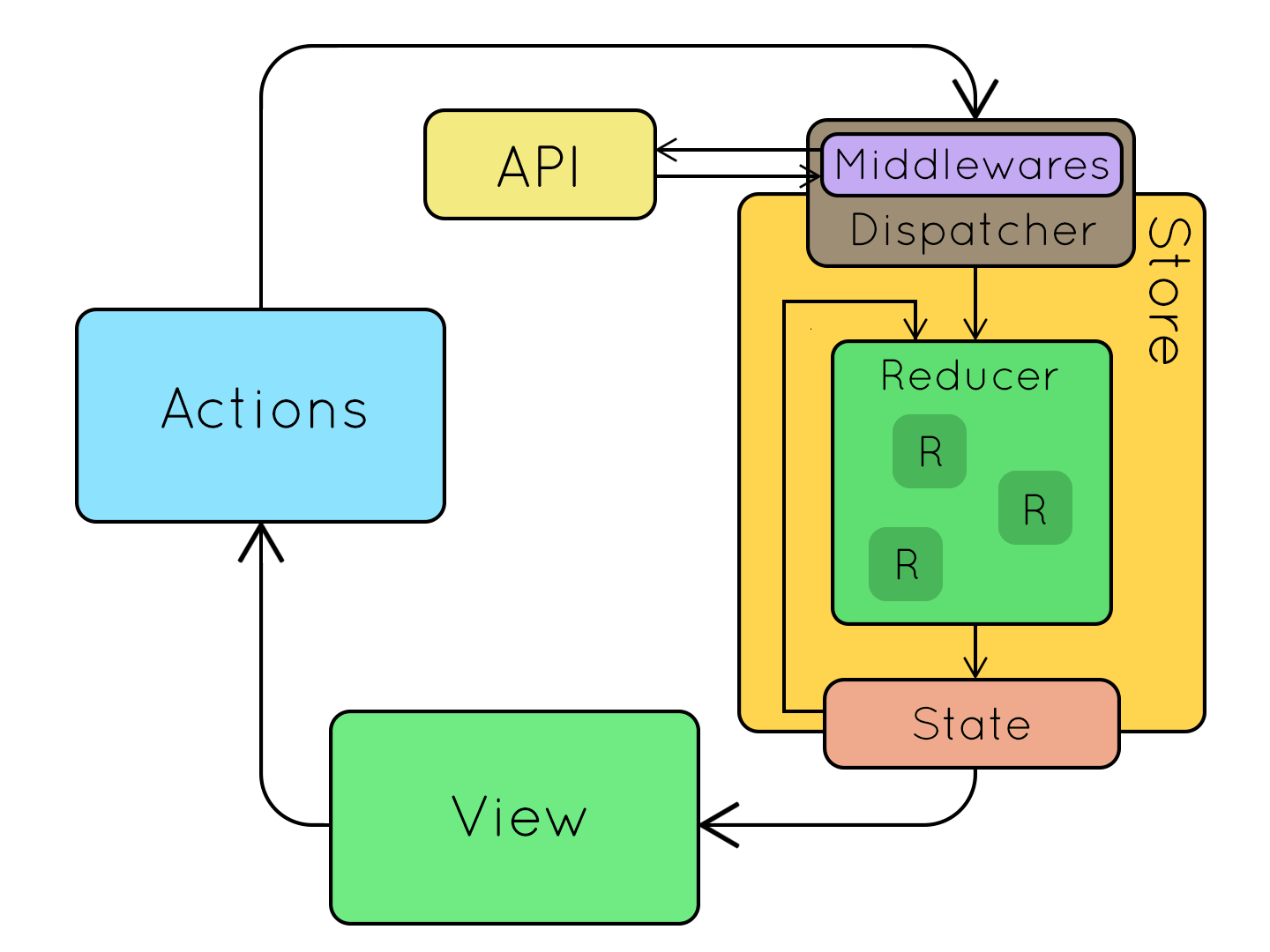Getting started with React-Native App and Parse
React Native lets you build mobile apps using only JavaScript. With React Native, you don’t build a “mobile web app”, an “HTML5 app”, or a “hybrid app”. You build a real mobile app that’s indistinguishable from an app built using Objective-C or Java.
Getting Started
Update 03/21/17: Creating React-native app has got simple now using create-react-native-app cli. Refer Link
- Install and create a sample app following below link https://facebook.github.io/react-native/docs/getting-started.html#content
If you haven’t tried android development earlier, try to use GenyMotion as emulator.
Below is a bare minimum app with login and sign-up screens backed by parse server https://github.com/prashanthmadi/react-native-login-signup-sample
What modules should i use ?
Awesome react-native has curated list of awesome resources https://github.com/jondot/awesome-react-native
Below are the modules i have used for my project(involves Forms and makes outbound calls to Parse Server). You can find my app @ https://github.com/prashanthmadi/Badi-mobile
Navigation
- react-native-router-flux Link
Redux and it’s relatives(to maintain global state)
- redux
- react-redux
- redux-saga (alternative: redux-thunk)
- redux-logger
Forms
- redux-form - Link
UI Elements
- react-native-elements
- react-native-datepicker
- react-native-action-button
- react-native-drawer
I have also tried shoutem but their theme concept was little confusing with unclear documentation.
Other API’s
- Parse - Link : Used to connect with Parse server hosted on Azure App services.
You would find better tutorials online on above modules. It took me a while to figure out redux part and would like to contribute on it in this blog.
What is Redux ?
Redux is a predictable state container for JavaScript apps.
Example : Think of a startup where everyone stay together in one small room and work together. In such scenario, you rarely have Scrum master (or) follow best practices to develop a product.
When company grows big, you have to define specific standards and follow them for better results. Like a Scrum master who would help collaborate between teams and has total knowledge of project at any given state.
I found some good images @ http://slides.com/jenyaterpil/redux-from-twitter-hype-to-production#/ and would use them here
History : Redux is inspired by Facebook’s Flux. Here is how Flux work’s
- User interacts with View
- Actions describe the fact that something happened on View
- There would be multiple stores in Flux and Dispatcher would pass this action info to Stores that subscribed for it
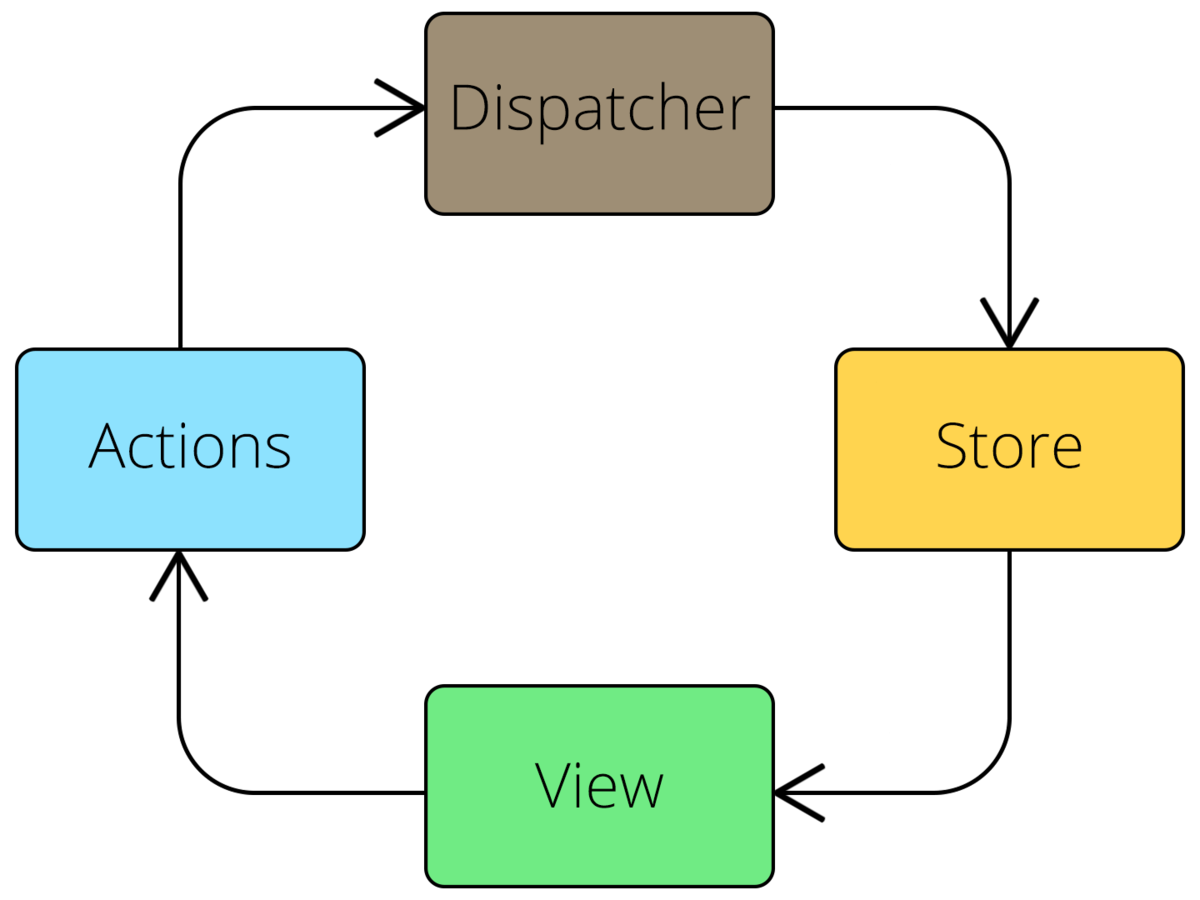
In Redux, we would have single store instead of multiple as in Flux above. In addition, we would have Reducer’s. Reducer’s specify how the application’s state changes in response
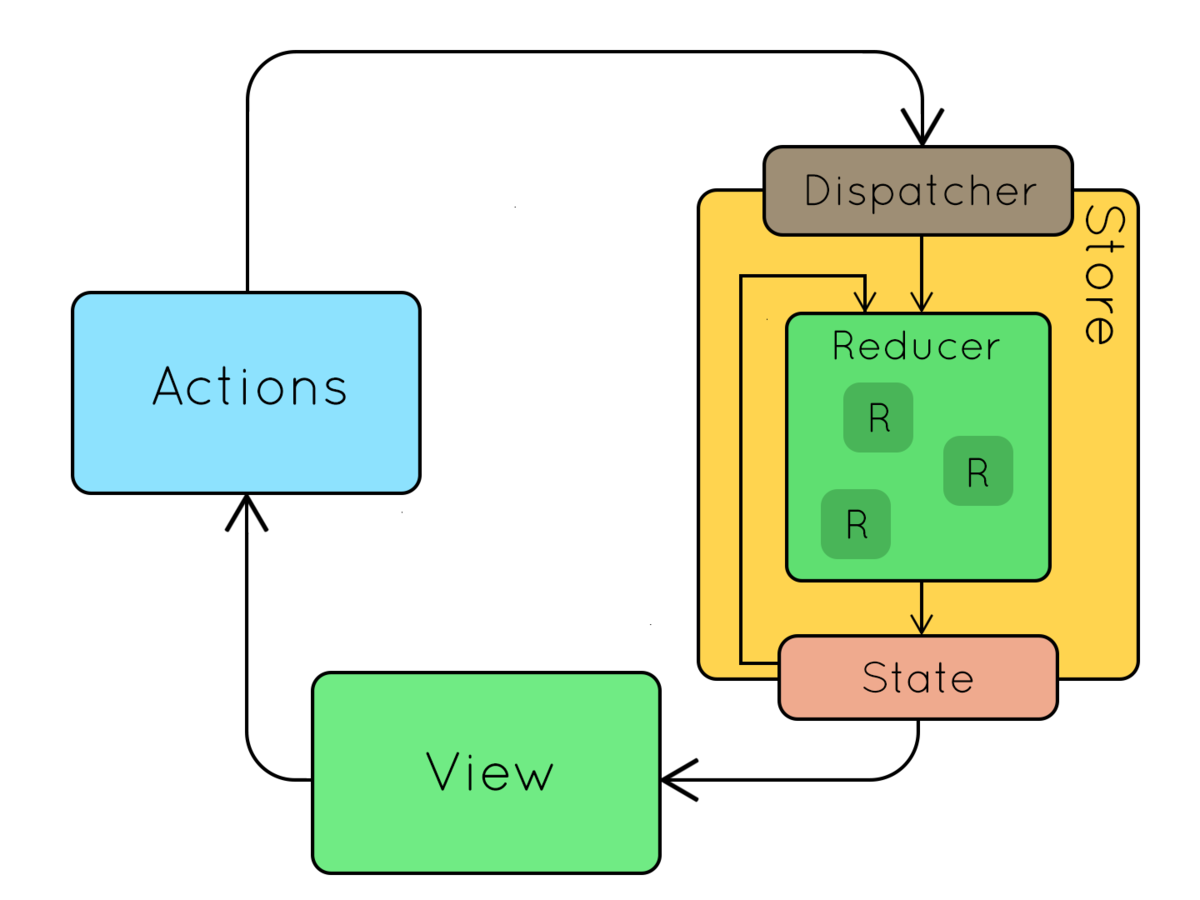
Sample Flow
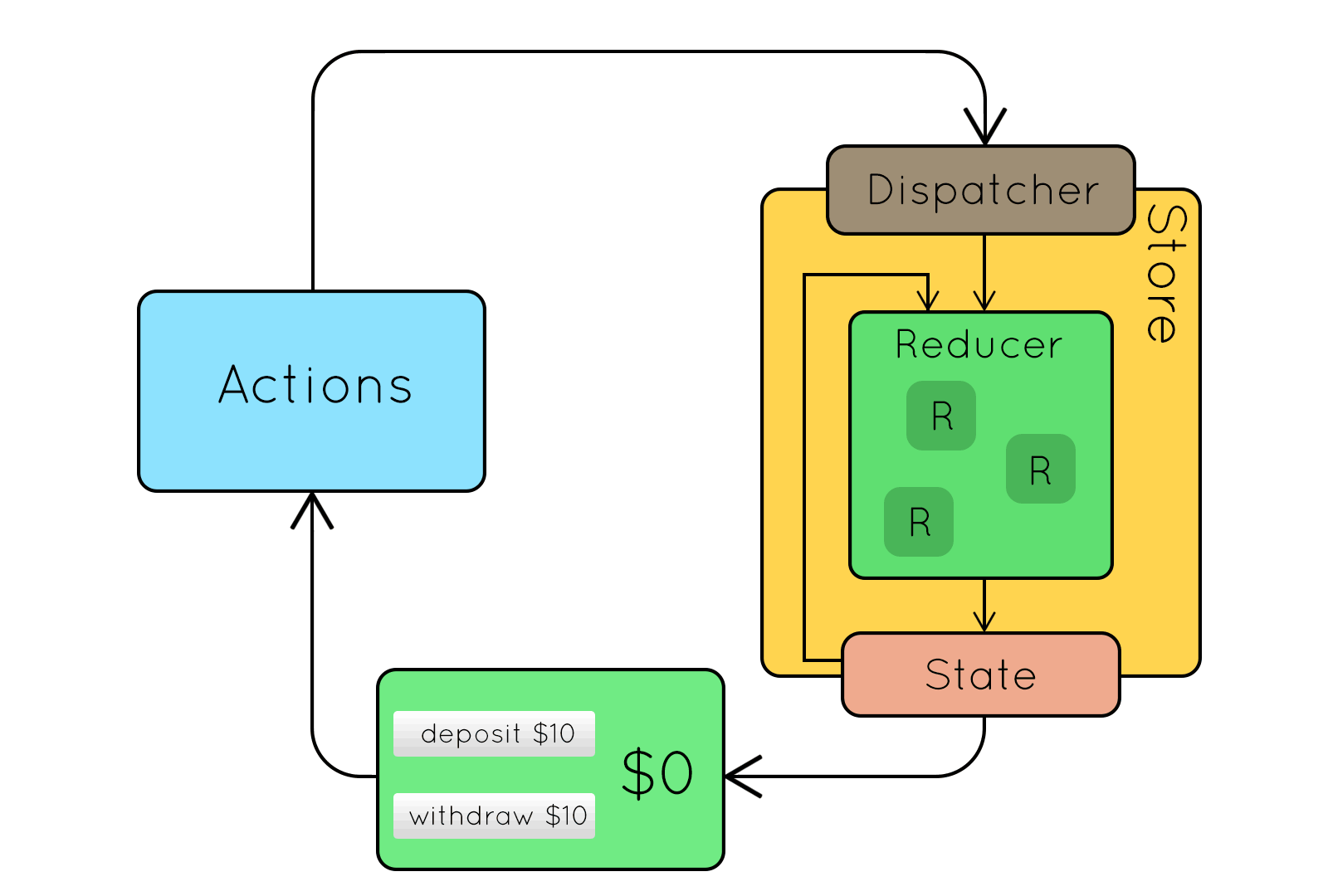 Let’s consider above Bank Transaction of $10 deposit,
Let’s consider above Bank Transaction of $10 deposit,
- An Event is fired in View to deposit $10
- Action would pass this info to Reducer that would change the state
- New State info is passed to View reflecting changes in it
Side Effects
Many applications would need asynchronous actions. Handling them would be little complex with normal redux.
Ex: Server Communication
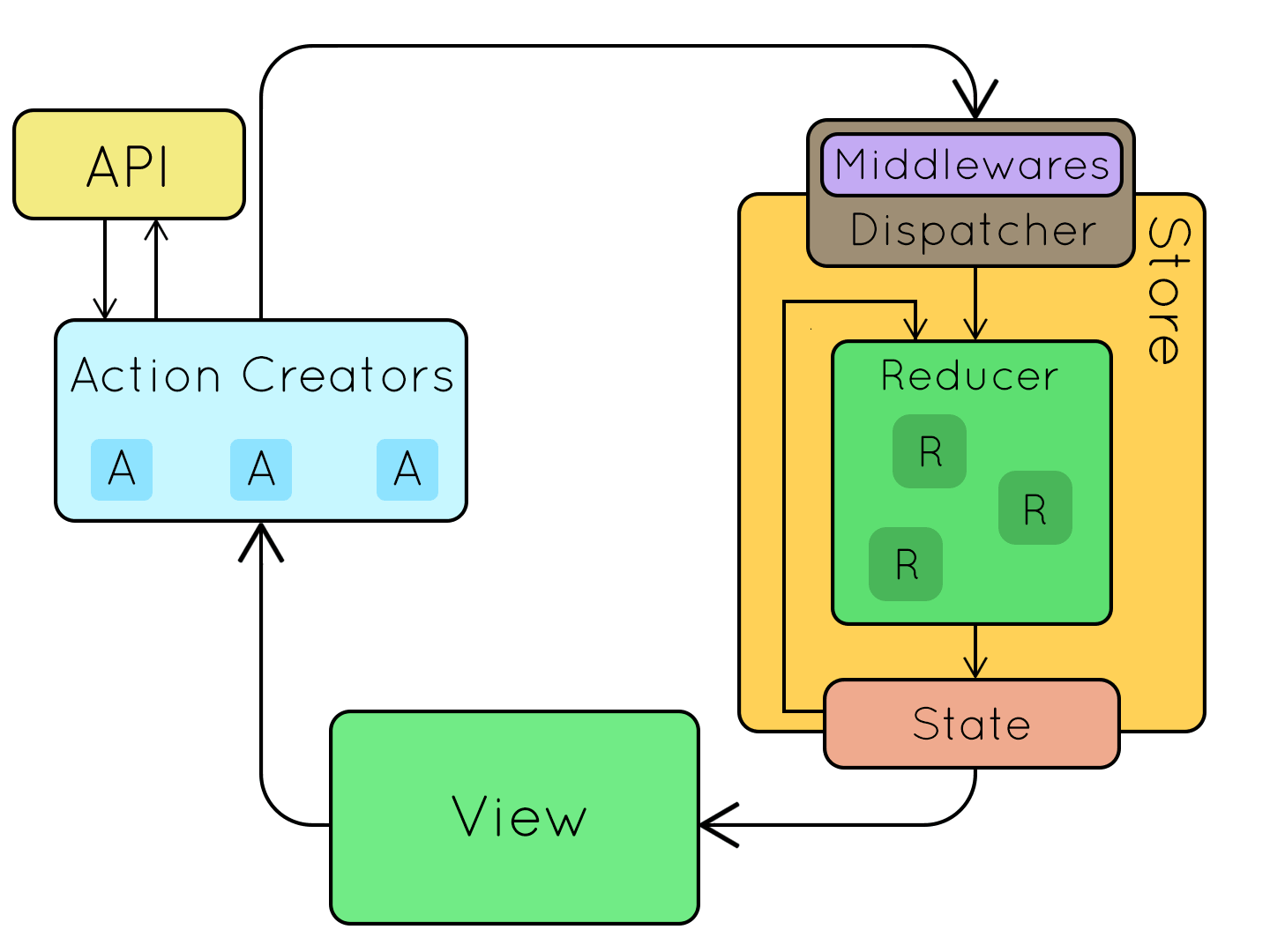
Middleware’s There are many middleware’s available to perform these Side Effects and make life easy. Notably are
- Redux-Thunks (Asynchronous Action Creators)
- Redux-Saga (async code in a synchronous Style)
